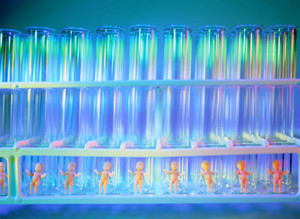What are the challenges facing development of biosimilar monoclonal antibodies (mAbs) in Europe? This was the question broached in a paper by Dr Christian Schneider – Chairman of both the Committee for Advanced Therapies and Biosimilar Medicinal Products Working Party and Co-opted member of the Committee for Medicinal Products for Human Use.
Challenges in the development of biosimilars mAbs
Biosimilars/Research
|
Posted 02/07/2010
 0
Post your comment
0
Post your comment

mAbs are highly complex molecules with secondary and tertiary structures subject to post-translational modifications like glycosylation. They may be heterogeneous and often include subtle mAb variants (microheterogeneity).
Dr Schneider and Dr Kalinke argued that although molecular characterisation of mAb molecules is extremely precise, reliable and reproducible, possibilities for mAb heterogeneity still exist. Physicochemical characterisation therefore remains difficult.
Like other biologicals, mAbs usually contain process- and product-related impurities. The manufacturing process is complex and fluctuations common. Although small changes—such as pH, temperature and culture media ingredients—may not seem significant, they can affect the product producing microheterogeneities, fragments and aggregates. Any changes in the production process will inevitably affect the final product, stated Dr Schneider and Dr Kalinke, underscoring the need for mAbs to be considered on an individual basis.
MAbs showing microheterogeneity can have different potencies, potentially resulting in inconsistent efficacy in clinical testing. This complexity is reflected in the amount of documentation submitted for the Marketing Authorisation Application, for example, on structure, physicochemical characteristics, biological activity (potency), manufacturing approach, and quality control.
The fact that a company developing a biosimilar mAb usually has no data on critical in-process controls and intermediates in the manufacturing process of the innovator (because it is proprietary, confidential information) and usually has to purify the drug substance from commercially available sources add further complexity to the situation.
The authors concluded that it is therefore clear why the ‘generic’ approach is not applicable to biotech products—a fact that is even more relevant for mAbs, which are much more complex than currently developed biosimilars, such as insulin. It is entirely possible that a biosimilar mAb might display subtle differences in molecular structure compared to the reference product that cannot be detected by current methods. It could be a challenge to demonstrate that such differences have no impact on clinical efficacy and safety.
(see also Will the EU biosimilars pathway be applicable to monoclonal antibodies?, Licensing of biosimilars in Europe and Development of biosimilars mAbs)
Reference:
Schneider CK, Kalinke U.Toward biosimilar monoclonal antibodies. Nat Biotechnol. 2008;26(9):985-90
General
Samsung Bioepis wins Pyzchiva case; Regeneron patent rulings threaten foreign biosimilars
Chinese biosimilars go global: growth, partnerships, and challenges
What is the future for the US biosimilar interchangeability designation

Biosimilars/Research Posted 05/06/2025
Biosimilar clinical efficacy studies: are they still necessary?

Biosimilars/Research Posted 27/05/2025
The best selling biotechnology drugs of 2008: the next biosimilars targets








Post your comment